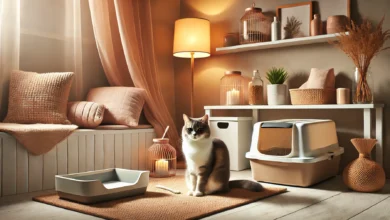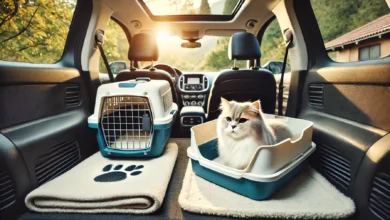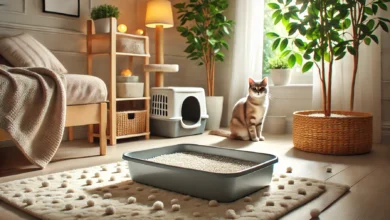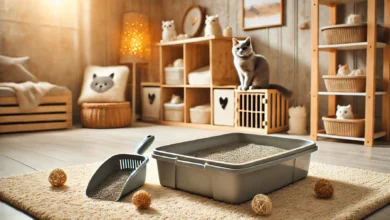How to Address Litter Box Aversion in Cats

Litter box aversion is frustrating to any pet owner.
Not only is it frustrating, but it may also be symptomatic of deeper problems with either your cat’s health or environment.
Cats are programmed to live a life based on routine and surroundings; any break or disruption in these can lead to issues with using the litter box.
If you observe that your cat tends to avoid the litter box, immediate investigation into the causes is required before the condition worsens.
In the rest of this article, we’ll guide you through a step-by-step approach to understanding why your cat could be experiencing litter box aversion and show some actionable steps to resolve it.
Litter box aversion is an issue that many cat owners experience more often than they think, and there can be a host of possible reasons for this behavior.
The reasons could range from a simple preference for a cleaner area to something as serious as a health condition.
Identifying the cause can be the first step towards getting your cat back on the right track.
So, let’s explore a few of the most common reasons for litter box aversion in cats and how you can effectively address them.
Table of Contents
Understanding the Causes of Litter Box Aversion
To find solutions for litter box aversion, one needs to understand the possible causes that trigger such behavior.
Cats are sensitive animals, and even a small change in their environment may provoke litter box avoidance.
There could be a number of reasons why your cat is avoiding the litter box, and addressing each one will help solve the problem.
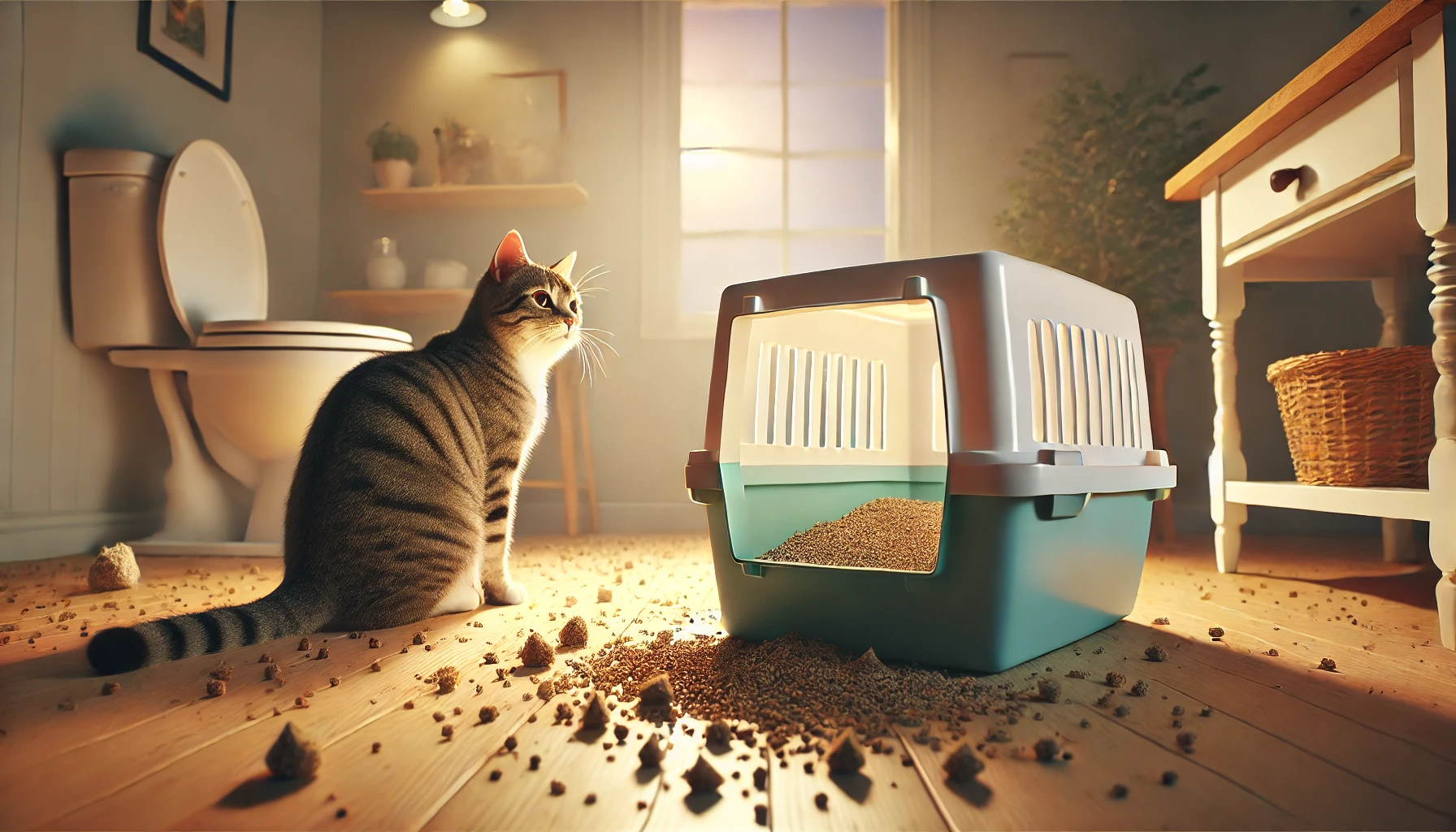
Common Behavioral Triggers
Cats are neat and fastidious animals; any disruption in their routine or comfort may lead to changes in behavior.
One of the most common triggers is a dirty litter box.
If you do not clean out the litter box as frequently as needed, your cat will begin to avoid it.
Cats need a clean and fresh area to relieve themselves, and a dirty litter box can be very off-putting.
Another behavioral cause is the type of litter used.
Cats can become accustomed to a specific texture or scent, and switching to a different brand or type of litter may cause them to avoid the litter box.
It’s important to find a litter your cat is comfortable with and stick to it.
Some cats prefer covered boxes, while others prefer open ones.
Knowing your cat’s preference can make a significant difference.
- Clean the litter box every day to prevent odor and waste from building up.
- Choose a litter that your cat is already familiar with and prefers.
- Try different types of litter boxes, such as open or covered, to see which your cat prefers.
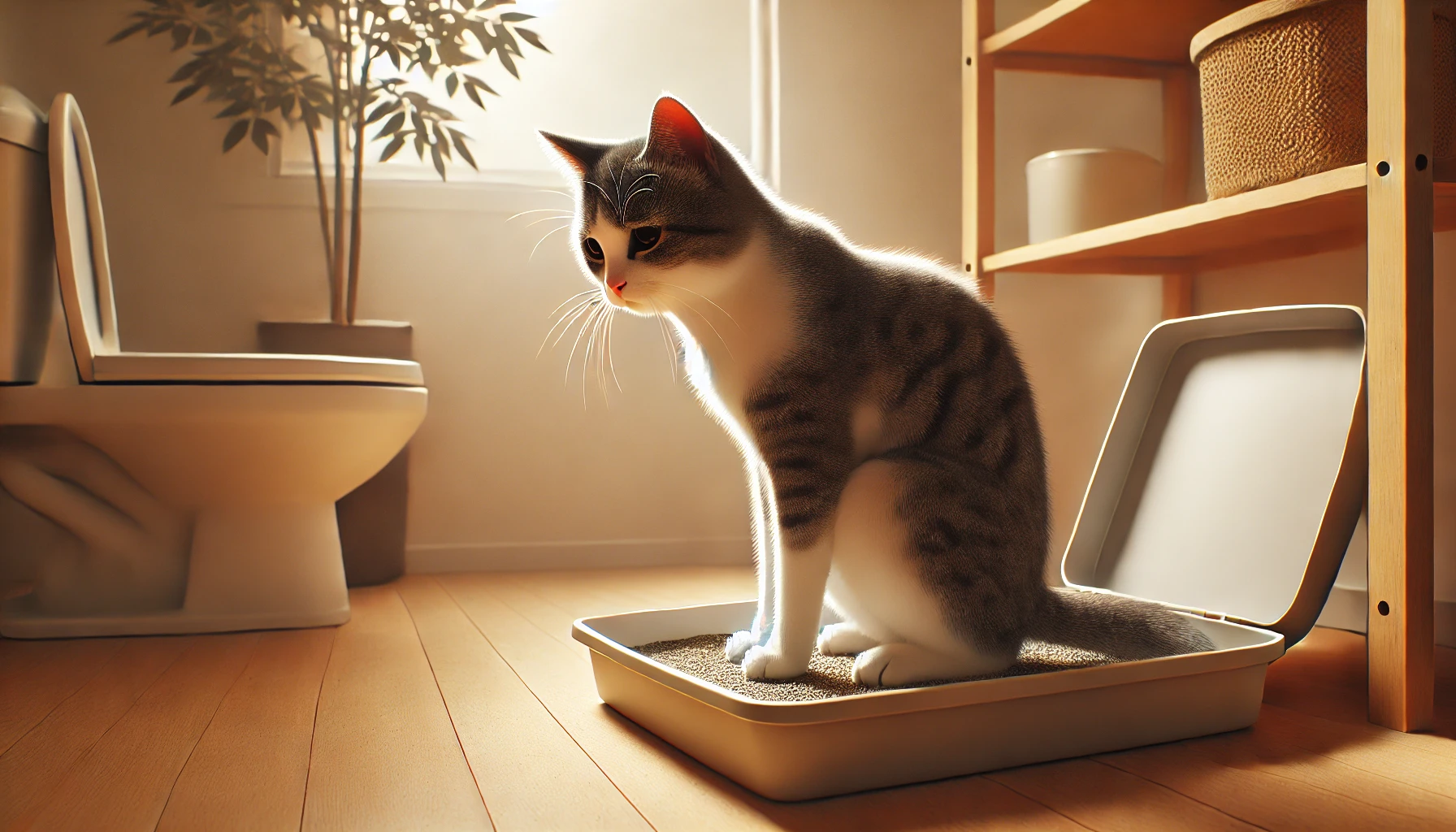
Health-Related Issues
Sometimes, litter box aversion is due to underlying health problems.
Conditions such as urinary tract infections (UTIs), kidney disease, or arthritis can cause your cat to associate the litter box with pain or discomfort.
If using the litter box causes pain, your cat may avoid it altogether.
If you notice that your cat is frequently urinating outside the litter box, straining, or showing signs of distress, it’s important to consult a veterinarian.
Early detection of health issues can prevent more serious problems and help your cat return to normal litter box habits.
- Watch for signs of pain when your cat uses or avoids the litter box.
- If these behaviors persist, consult a veterinarian as they may be due to health conditions.
- Ensure easy access to the litter box, especially for older cats with mobility issues.
Identify the triggers that cause litter box aversion to help your cat regain proper litter box behavior.
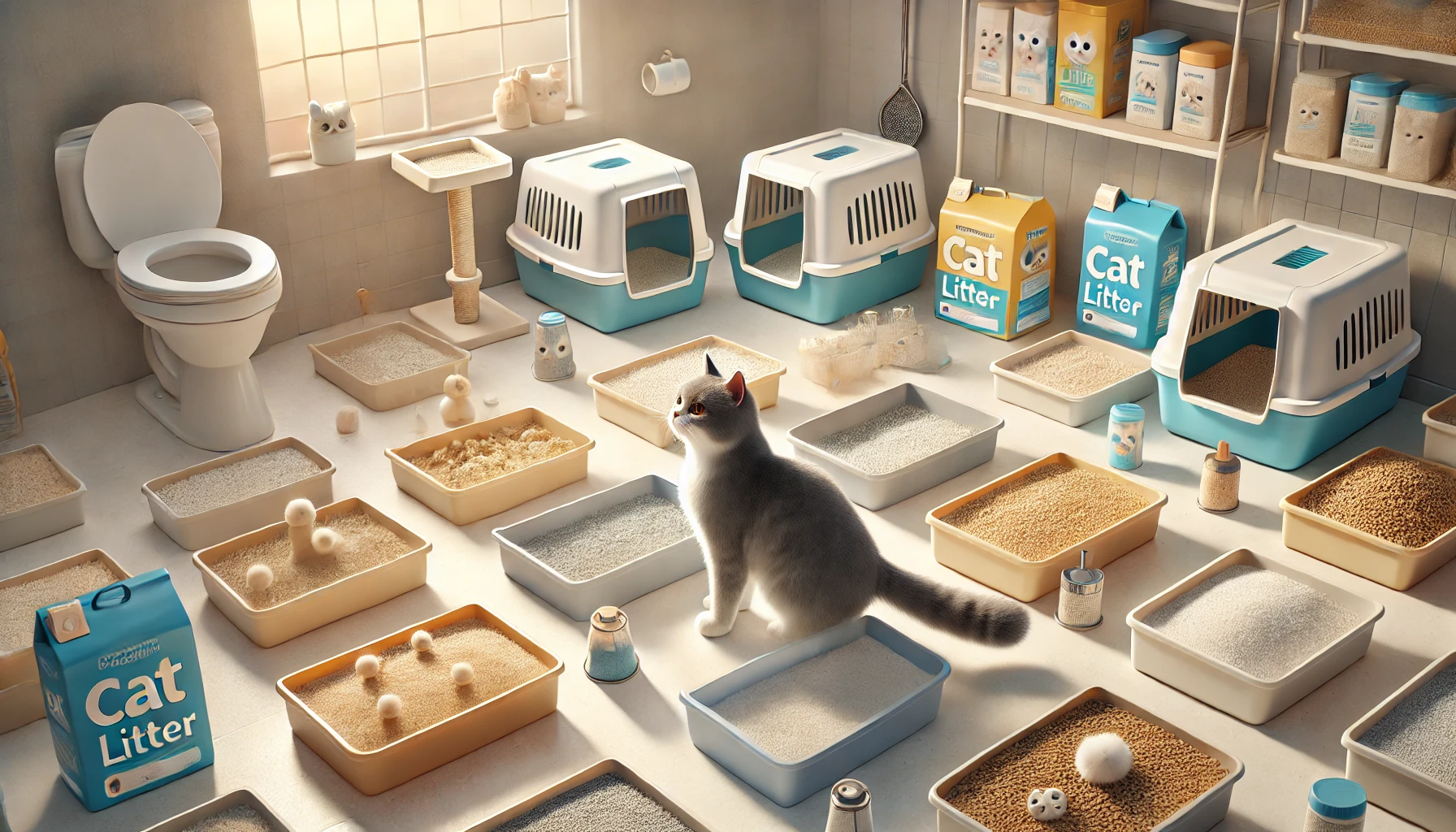
Choosing the Right Litter and Litter Box
The most effective measure to prevent feline litter box aversion is to ensure the proper selection of litter and litter boxes.
Cats are individualistic, and even the smallest change in their litter box arrangement can result in litter box avoidance.
If your cat fits this profile, now might be a good time to reconsider the litter and litter box you have on hand.
Let’s explore how to make the best choices for your cat.

Choosing the Best Type of Litter
Cats all have their own personal preferences when it comes to litter.
Some cats like clumping litter, while others may prefer non-clumping types.
The texture of the litter may also make a difference; fine-grained litters are generally softer on your cat’s paws and therefore more appealing.
Scented or unscented is another factor.
Cats don’t like strong odors, and many will avoid using the litter box altogether if it’s filled with highly perfumed litters.
Unscented, dust-free, and clumping litters are usually the best choices because they keep your cat’s area neat and tidy.
- Go with an unscented litter; cats have a sensitive sense of smell and may avoid scented litters.
- Look for low-dust litters to prevent respiratory issues and to keep your cat’s area cleaner.
- Experiment with different types of litter, including clumping, non-clumping, or natural options like wood or paper pellets.
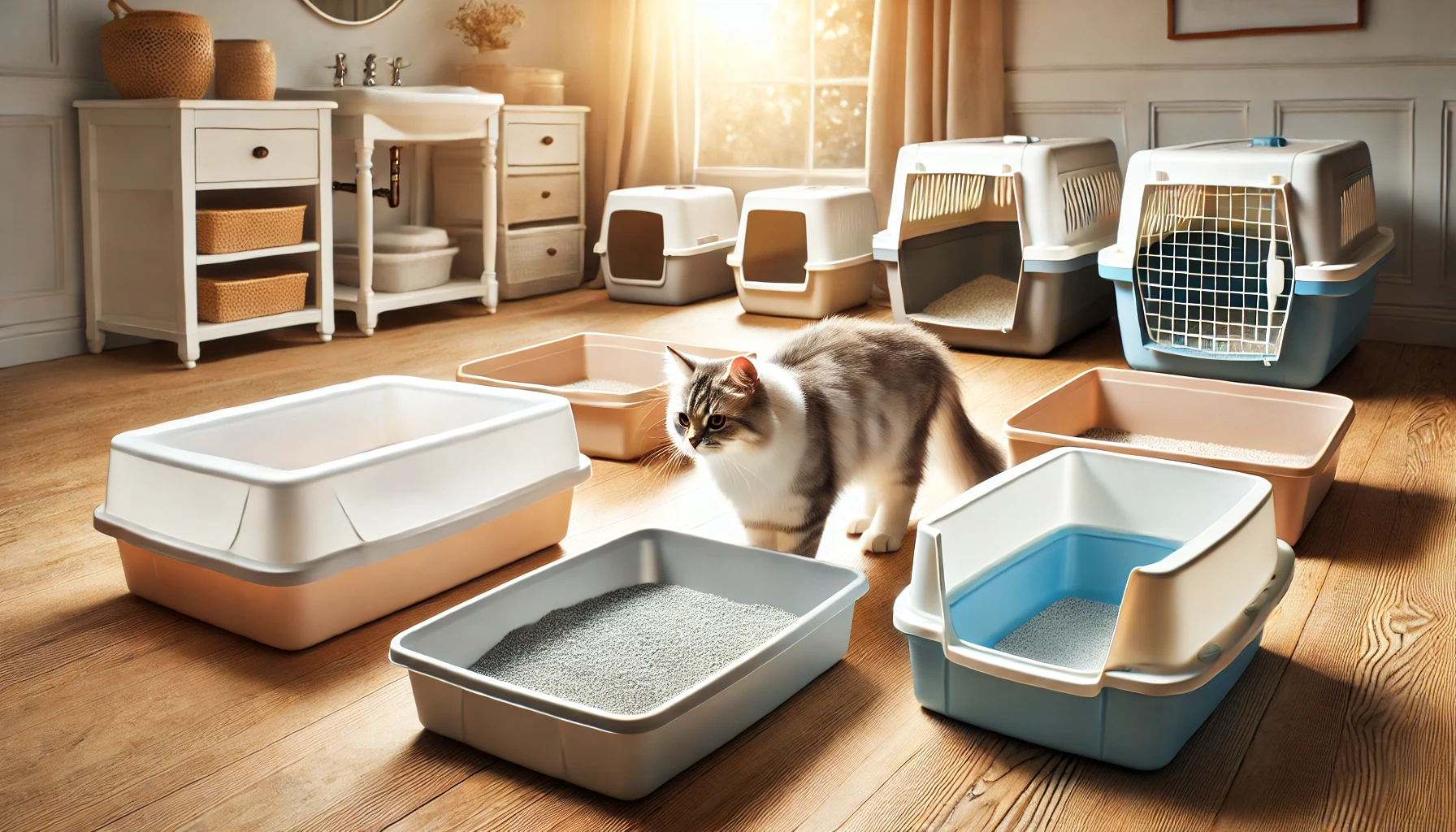
How to Choose the Perfect Litter Box
The type and size of the litter box are just as important as the litter itself.
Cats generally prefer larger litter boxes that allow them to move around freely.
A good rule of thumb is to provide a box that is at least one and a half times the length of your cat.
Some cats enjoy privacy and may prefer a covered litter box, while others feel more comfortable with an open box.
Observe your cat’s preferences and make adjustments as needed.
- Provide a litter box that is at least 1.5 times the length of your cat.
- Try both covered and open boxes to find out which your cat prefers.
- Consider a low-sided box for kittens or older cats to make access easier for them.
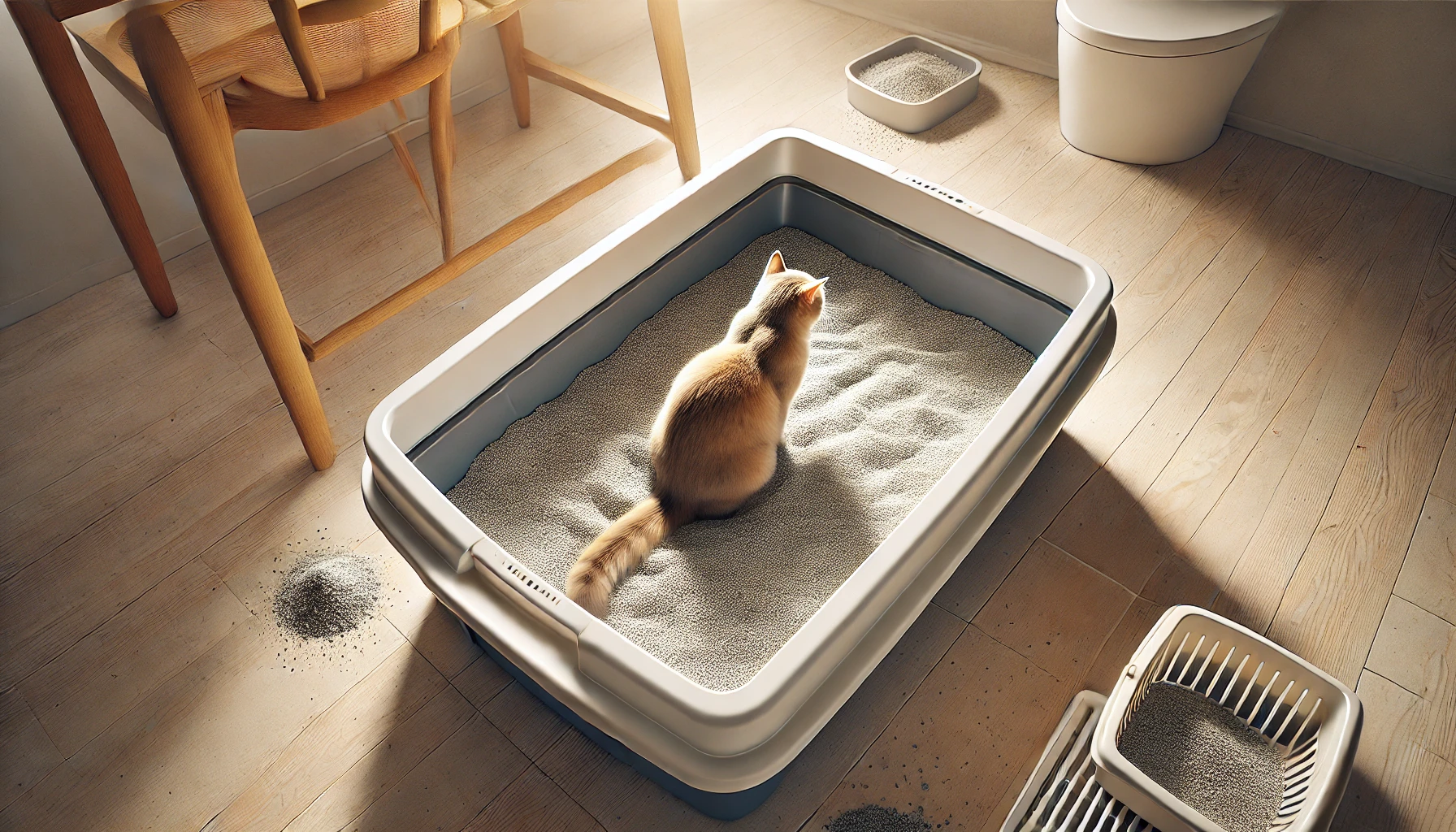
The Importance of Litter Box Size and Depth
Size and depth are critical factors in litter box satisfaction.
A litter box that is too small can make your cat feel cramped, while one that is too deep may be difficult for older cats to enter or exit.
Keeping the litter at an optimal depth—around 2-3 inches—provides your cat with enough room to dig and cover waste naturally.
- Ensure the litter box is large enough for your cat to turn around comfortably.
- Keep the litter at a depth of 2-3 inches to allow your cat to dig and cover waste naturally.
- For older cats, opt for a box with lower sides to make access easier.
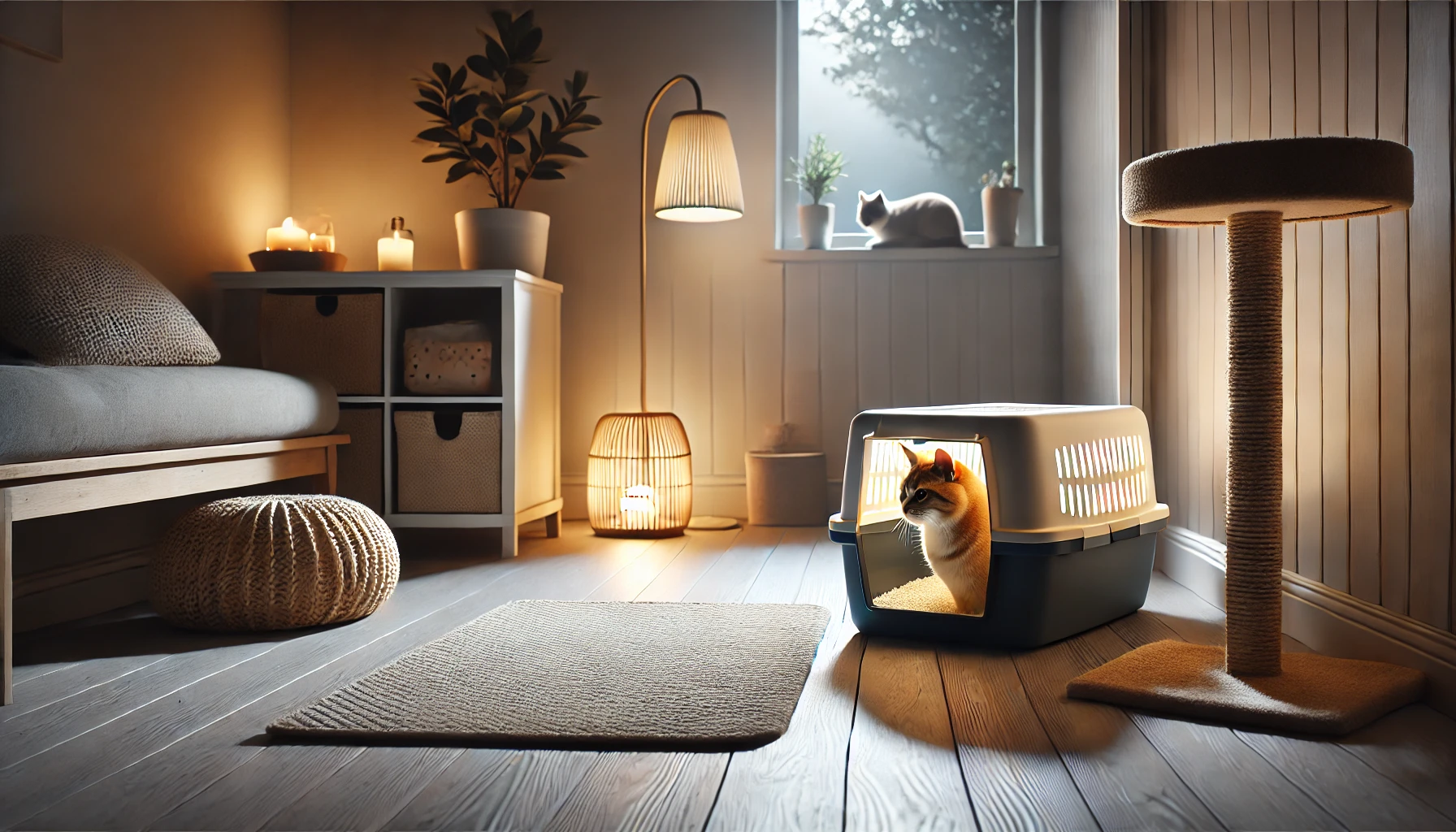
Where to Place Your Litter Box for Best Results
Location is another critical factor in encouraging proper litter box use.
Cats prefer quiet, low-traffic areas where they can have privacy and feel safe while using the litter box.
Placing the box near noisy appliances or in high-traffic areas can deter your cat from wanting to use it.
It’s also important to have multiple boxes in multi-cat households to prevent territorial disputes and ensure that each cat has access to a litter box whenever they need it.
- Place the litter box in a quiet, low-traffic area where your cat can feel secure.
- Avoid placing the litter box near loud appliances or in high-traffic areas.
- In multi-cat households, provide one litter box per cat, plus one extra.
Ensure you select the right type of litter and box to prevent litter box aversion.
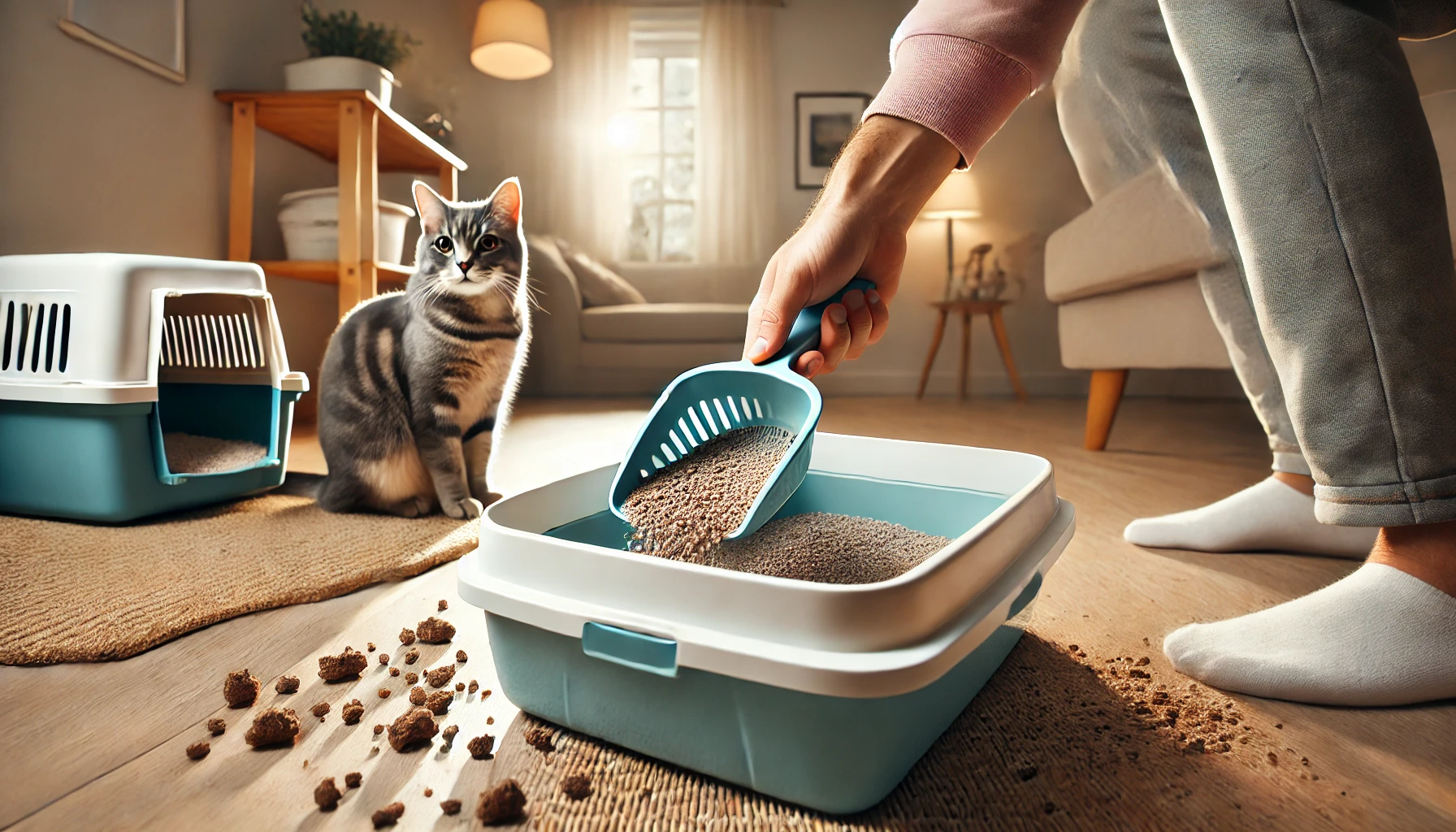
Proper Litter Box Maintenance Helps Prevent Aversion
Keeping the litter box clean and comfortable is among the primary preventive measures for litter box aversion in cats.
Cats are naturally cleanliness-oriented animals, and a dirty litter box can become a point of discouragement for them in a very short period.
Proper hygiene around the litter box ensures your cat continues to use the box and also minimizes or eliminates offensive odors within your home.
Let’s delve into the best practices for maintaining a clean and appealing litter box for your cat.
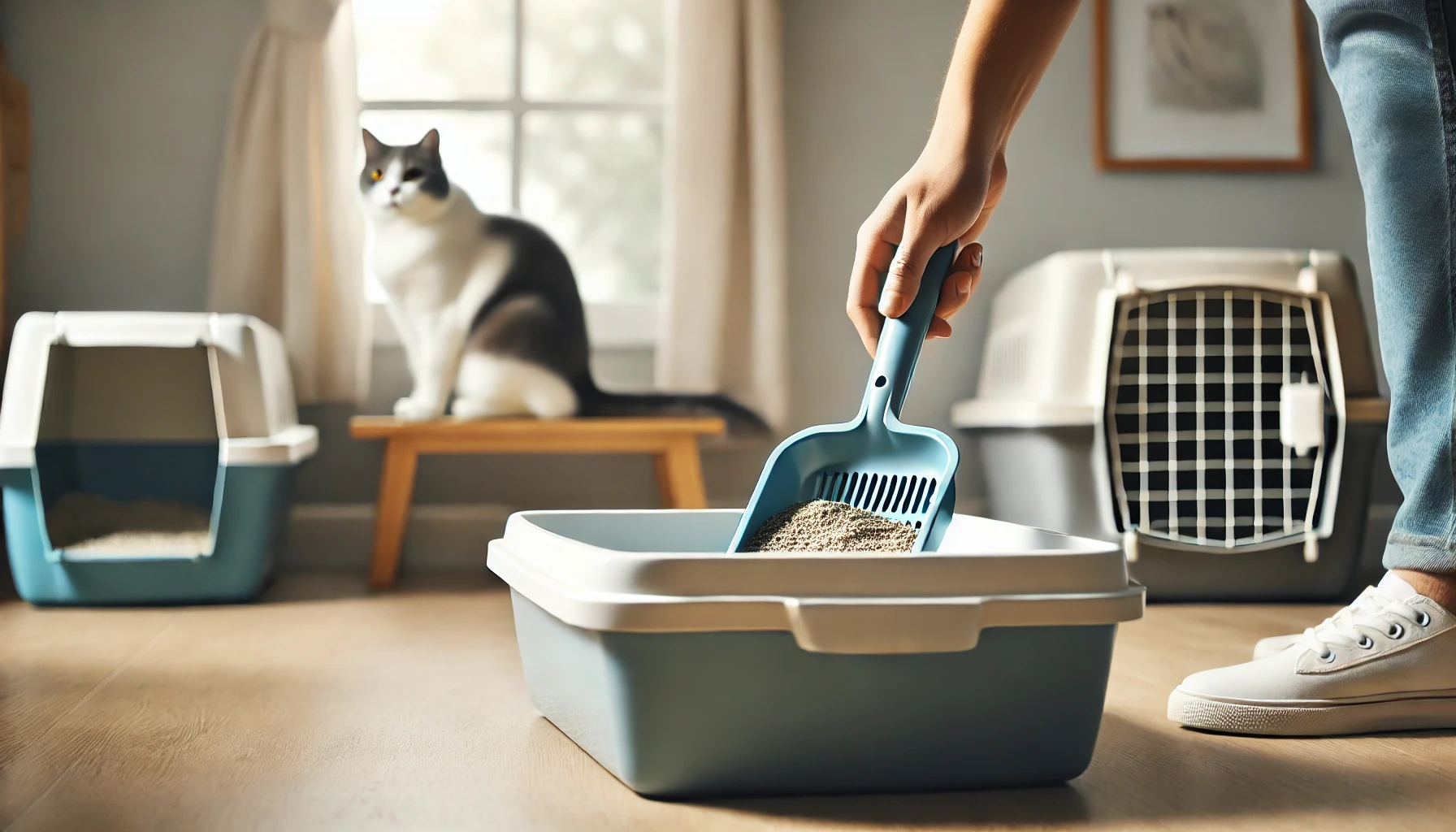
How Often to Clean the Litter Box?
Cleaning frequency is the most important factor in keeping your cat happy with their litter box.
If possible, scoop out the litter daily to remove waste and prevent odors from building up.
In multi-cat households, this may need to be increased to two or more times a day, depending on how many cats there are and how many litter boxes are in use.
Regular scooping will keep the box fresh, encouraging your cat to continue using it.
- Scoop the litter box daily to remove waste and prevent unpleasant odors.
- In multi-cat households, clean more frequently to keep the litter box hygienic.
- Consider clumping litter for ease in waste removal and its ability to minimize odor.
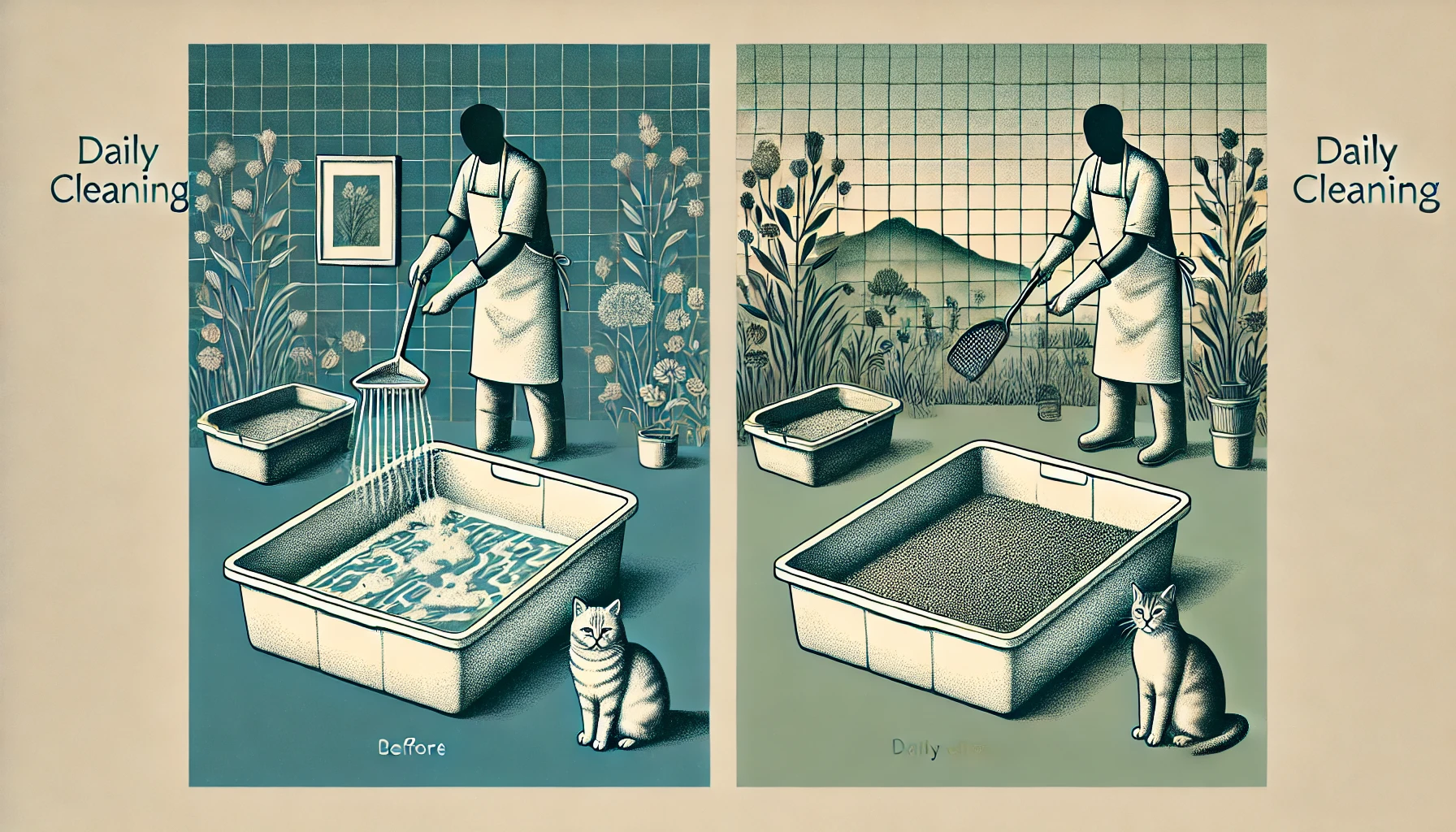
Deep Cleaning vs. Daily Maintenance
Beyond simple daily scooping, the litter box will need periodic deep cleaning.
Once a week, empty the entire box and wash it with mild soap and warm water.
Let the box dry thoroughly before refilling it with new litter.
Avoid using strong-smelling cleaners or harsh chemicals, as these can irritate your cat’s sensitive nose and make them averse to entering the box.
This process will help maintain a clean and hygienic litter box environment.
- Clean the entire box once a week with mild soap and water.
- Avoid strong chemicals that could deter your cat from using the box.
- Let the box dry completely before refilling with fresh litter.
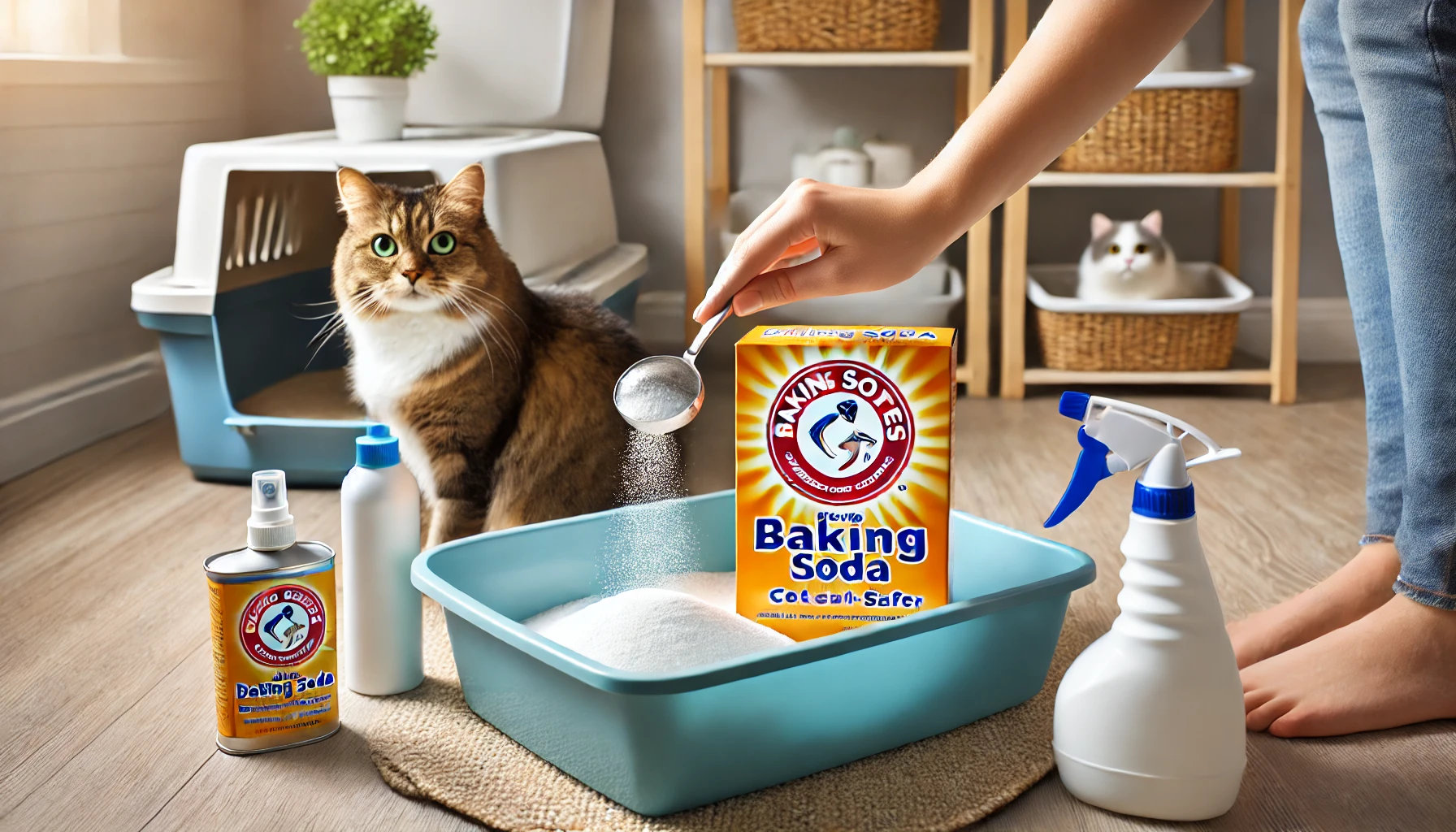
Using Deodorizers: Yes or No?
Many cat owners wonder whether using deodorizers or sprays around the litter box is a good idea.
While this may seem like an easy way to help control odors, some cats are highly sensitive to strong fragrances and may avoid the litter box if it is filled with artificial scents.
If odors are a concern, it’s best to focus on maintaining a regular cleaning routine.
Unscented deodorizers or natural products like baking soda can be safer alternatives to freshen the box without overwhelming your cat’s senses.
- Avoid strong-scented deodorizers or sprays to prevent irritation for your cat.
- Sprinkle baking soda in the litter box to absorb odors naturally.
- Prioritize regular cleaning over masking odors with artificial scents.
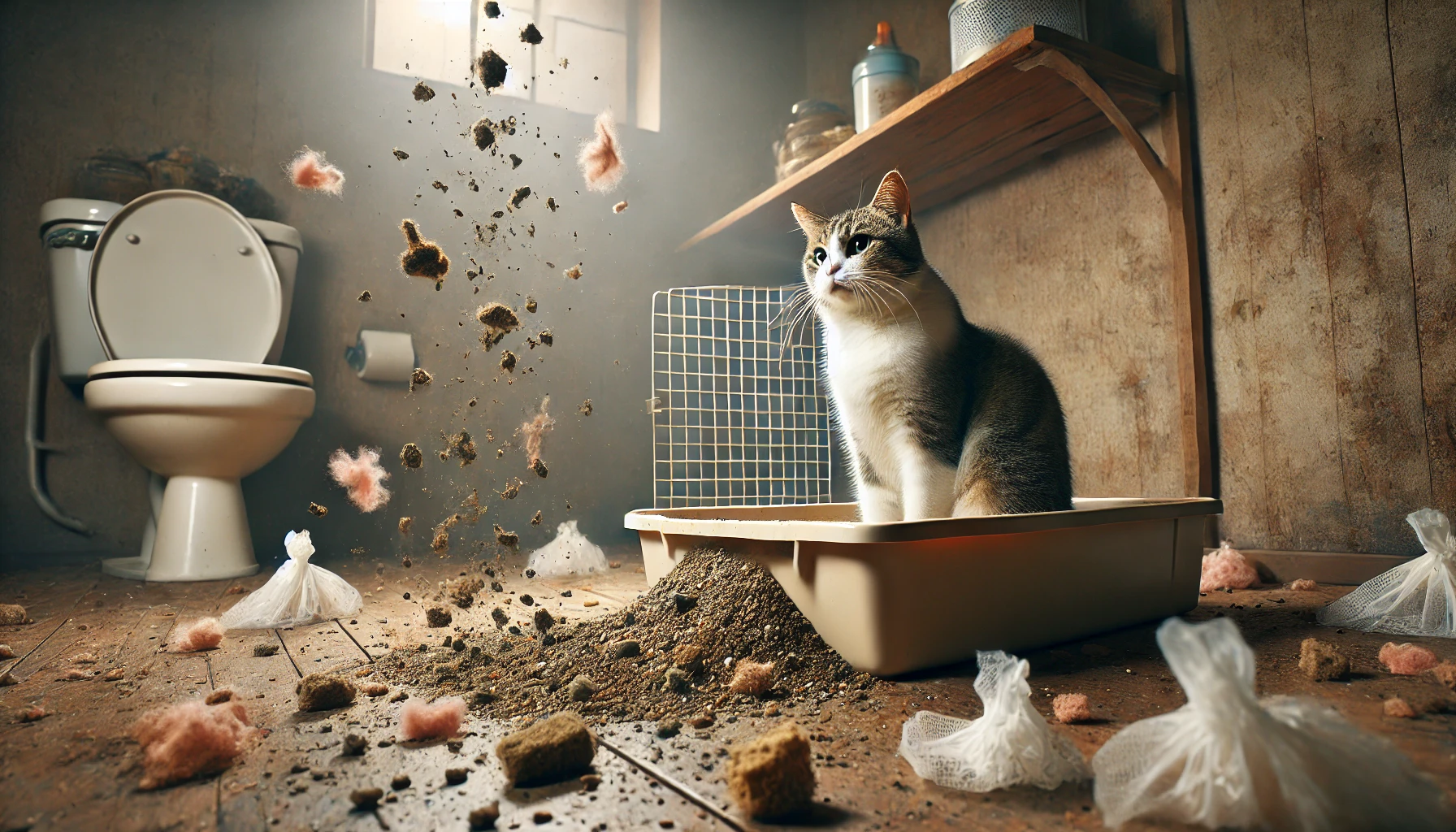
Signs Your Litter Box is Filthy and How It Affects Your Cat
Cats are generally good at communicating when they’re dissatisfied with their litter box.
If your cat starts eliminating outside the box, it’s often a sign that the litter box is too dirty.
Other behavioral changes may include excessive scratching around the box or a refusal to cover waste.
Ignoring these signs can lead to long-term litter box aversion, so it’s essential to stay aware of your cat’s behavior.
- Watch for signs such as eliminating outside the box or excessive scratching near the box.
- Make sure the litter box is always clean to prevent these behaviors.
- Address issues quickly to avoid turning litter box avoidance into a habit.
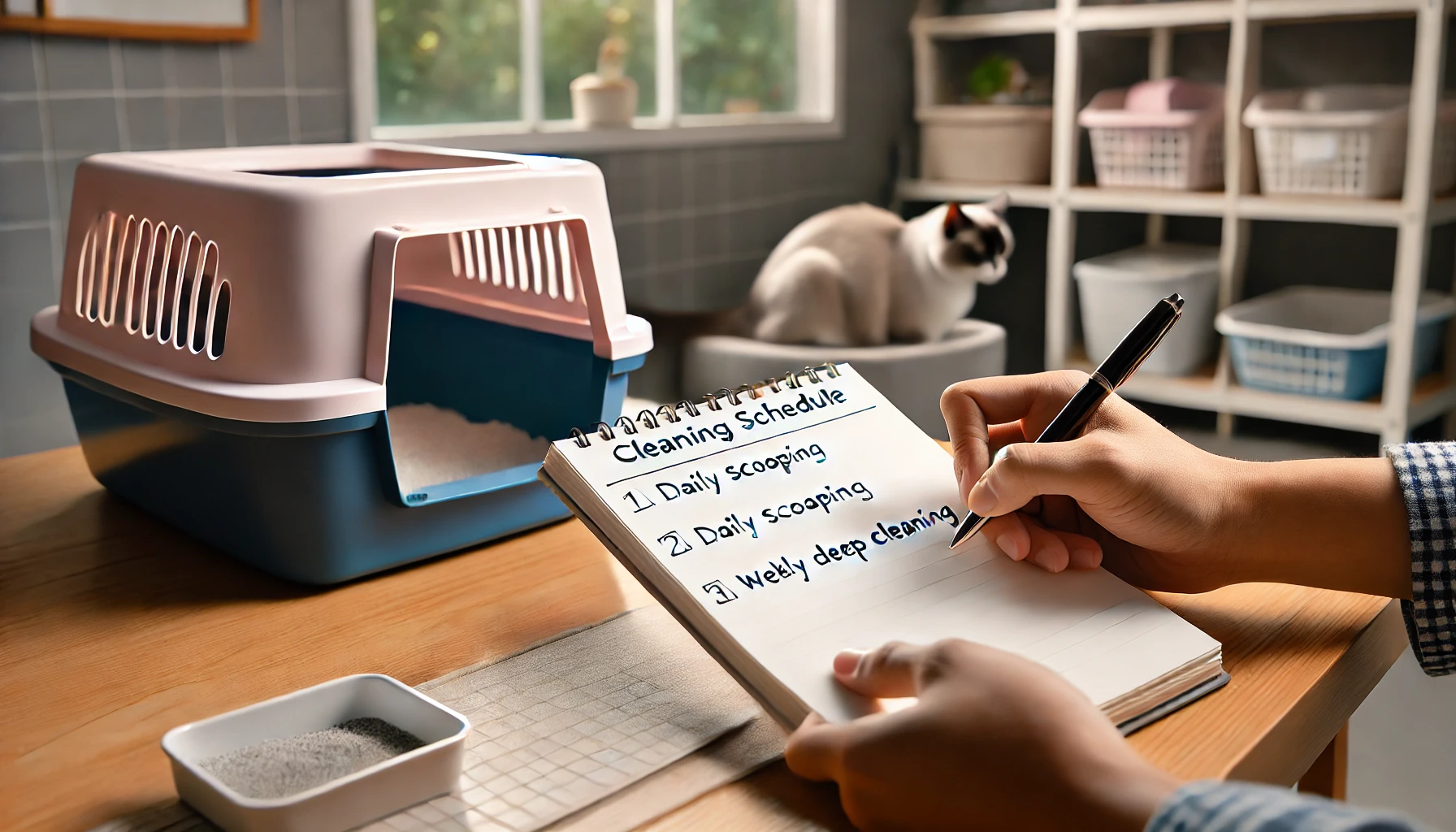
Creating a Cleaning Schedule
Litter box maintenance is based on consistency.
By building a routine, you create a predictable environment that minimizes stress and helps prevent litter box aversion.
This can involve daily scooping, weekly deep cleaning, or a combination of both.
The key is ensuring your cat feels comfortable using their litter box without issues.
- Establish a regular cleaning schedule to keep the litter box fresh.
- In multi-cat households, clean litter boxes frequently to avoid territorial disputes.
- Maintain a consistent cleaning routine to reduce your cat’s stress.
- Scoop the litter box daily.
- Deep clean the box weekly to prevent odors and discomfort.
- Use unscented, dust-free litter for best results.

Behavioral Solutions for Cats Avoiding the Litter Box
If your cat is avoiding the litter box, then some behavioral strategies need to be employed to encourage them to return to using it.
Cats can be sensitive animals, and too much change in their environment or routine triggers avoidance behavior.
Fortunately, most of these issues are correctable with patience and a strategic approach.
Let’s discuss some ways you can help your cat overcome litter box avoidance.
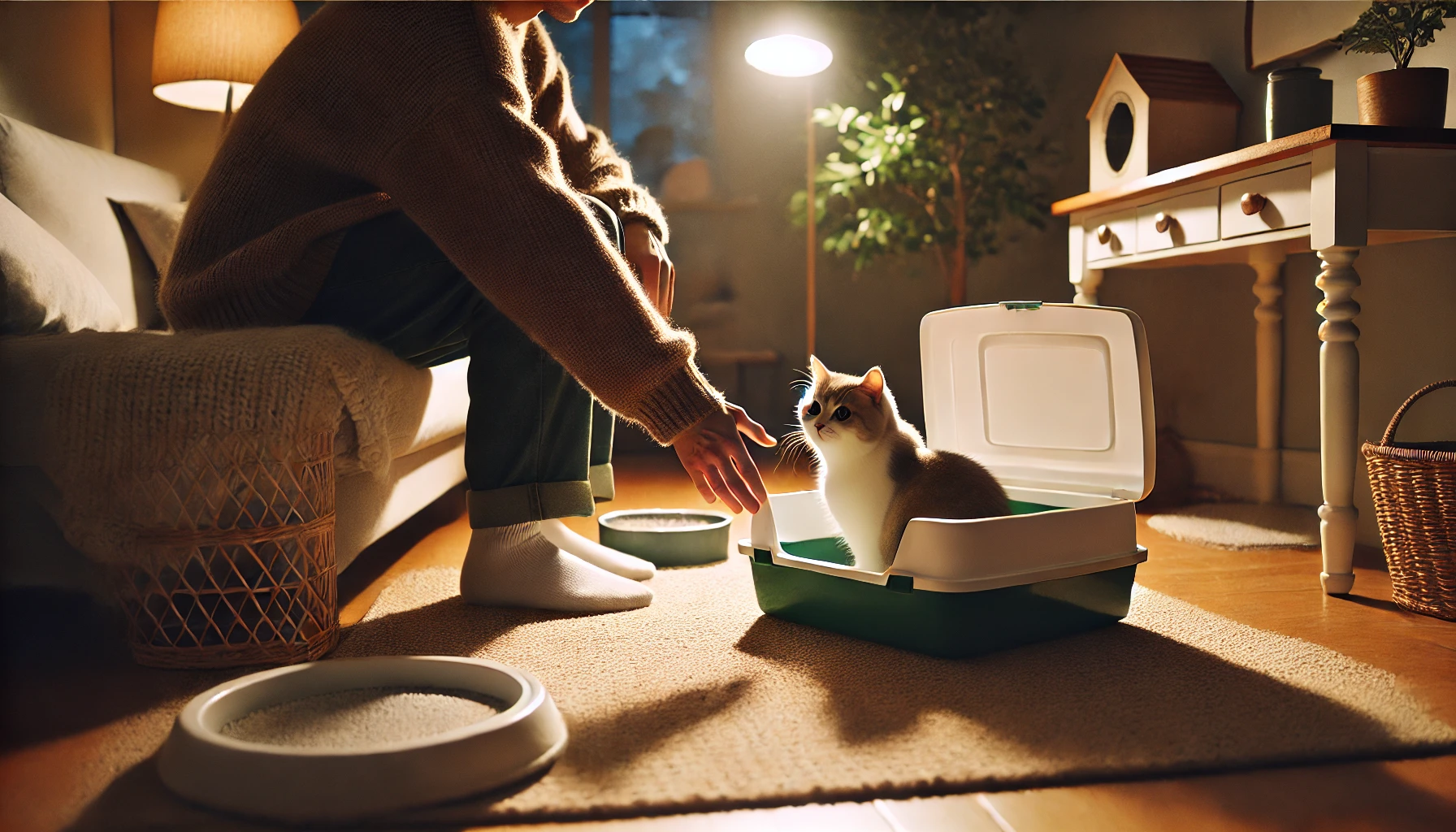
Reintroducing Your Cat to the Litter Box
If your cat has developed litter box aversion, you can re-establish positive associations by reintroducing them to the litter box gradually.
First, ensure the box is clean, comfortable, and in a quiet place where your cat feels secure.
Try placing your cat in the box after meals or when you notice them sniffing around or searching for a spot to go.
Reward them with treats or praise when they use the box.
The goal is to make the litter box a ‘no-stress’ zone for your cat.
- Place the litter box in a quiet area with low traffic so your cat can go undisturbed.
- Encourage your cat to use the box after meals or when showing signs of needing to eliminate.
- Reward your cat for using the box with treats or praise to reinforce positive behavior.
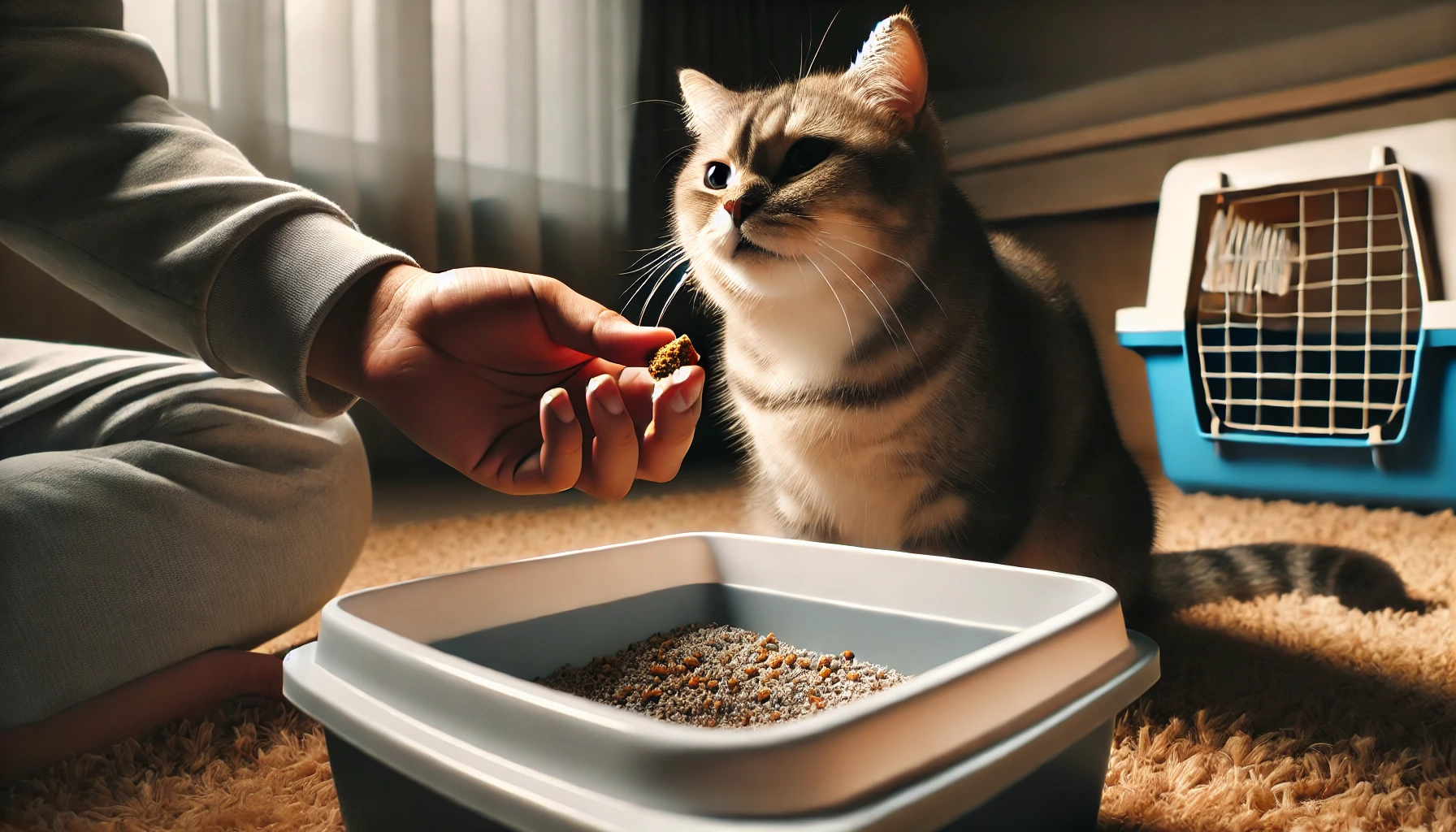
Positive Reinforcement Techniques
Reward-based training is one of the most effective ways to reinforce positive litter box behavior.
Whenever your cat uses the litter box, immediately reward them with treats, petting, or verbal praise.
This will create a positive association with the litter box.
Avoid punishment, as this can make your cat fearful, which will only increase their avoidance.
Gentle and consistent encouragement helps cats build trust and confidence in their environment.
- Reward your cat with treats, petting, or words of praise after they use the litter box.
- Avoid punishment, as it causes stress and exacerbates litter box avoidance.
- Consistency with positive reinforcement helps your cat feel more confident.

Reducing Stress and Anxiety in Cats
Changes within the household, new pets, or even changes in routine might cause your cat to feel insecure, leading to avoidance.
To alleviate stress, create a stable and calming environment.
Provide your cat with multiple hiding spots, vertical spaces like cat trees, and interactive toys to boost their confidence.
You can also use pheromone diffusers to help reduce anxiety.
- Provide multiple hiding spots and elevated spaces to reduce anxiety.
- Consider using pheromone diffusers to create a calming environment for your cat.
- Establish and stick to a routine to reduce stress triggers for your cat.

When to Seek Help from a Feline Behaviorist
If your cat continues to avoid the litter box despite your best efforts, it may be time to seek help from a feline behaviorist.
A professional behaviorist can assess your cat’s environment, behavior, and health to determine the root cause of the problem.
They can create a customized plan tailored to your cat’s needs and help you implement effective solutions.
This is especially helpful when medical issues have been ruled out and the problem is purely behavioral.
- If litter box avoidance persists, seek help from a feline behaviorist.
- A behaviorist can evaluate the situation and create a tailored solution for your cat.
- Behavioral interventions may be necessary if other strategies have failed.
Reintroducing your cat to the litter box gradually and using positive reinforcement are key strategies for correcting litter box avoidance.

Medical Issues Causing Litter Box Aversion
While litter box aversion may most frequently be due to behavioral and environmental causes, it would be incorrect to overlook the possibility of a medical problem behind the behavior.
Often, health issues can affect your cat in such a way that elimination becomes painful or uncomfortable, leading them to avoid the litter box.
If your cat suddenly develops litter box avoidance, it is important to consider possible medical causes and consult a veterinarian.
Let’s explore some common medical reasons your cat may be avoiding the litter box and how to treat them.
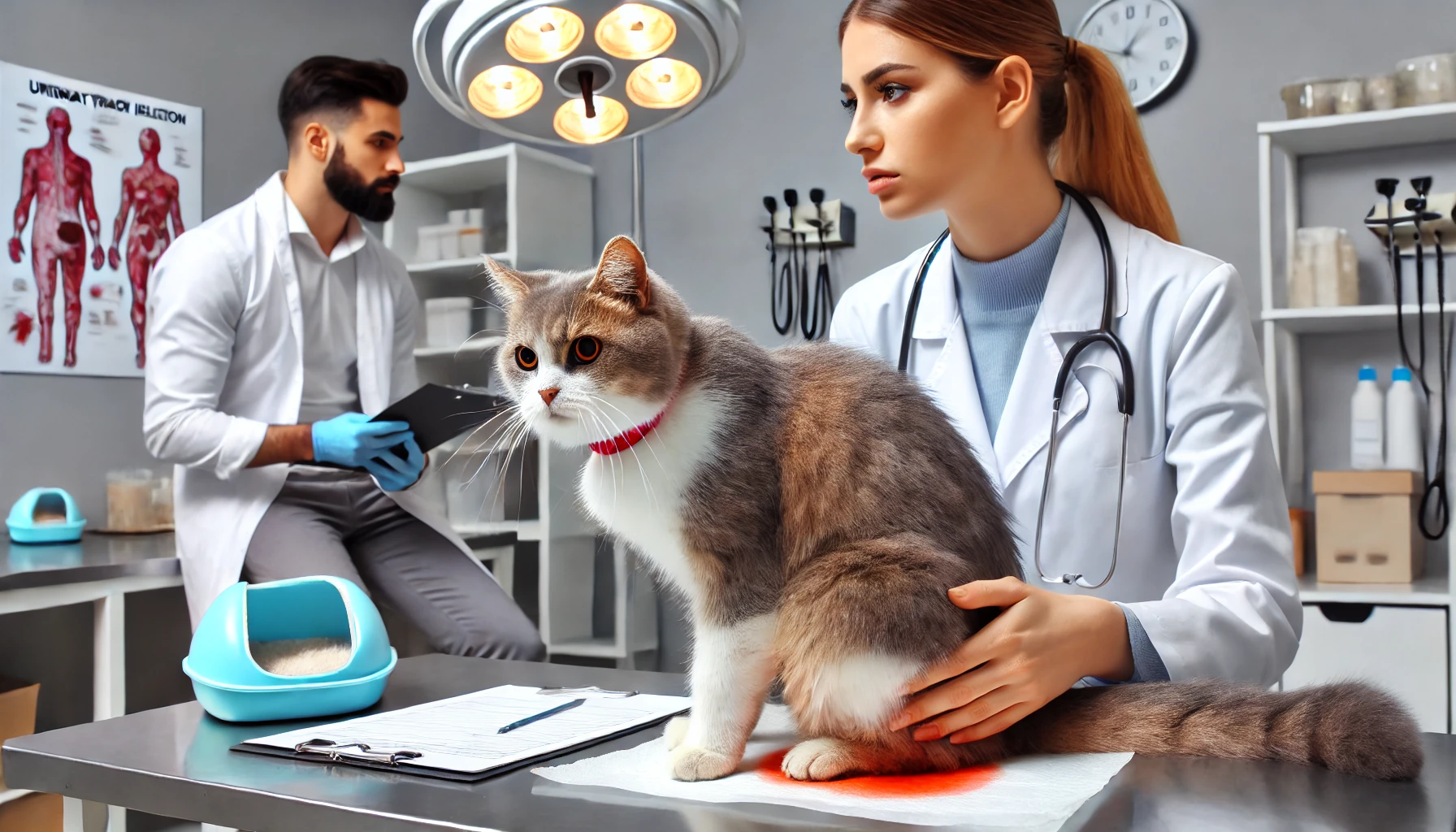
Common Urinary Issues in Cats
One of the most common culprits for litter box avoidance is an issue with the urinary tract, such as urinary tract infections (UTIs), bladder stones, or feline lower urinary tract disease (FLUTD).
These conditions can make elimination painful, associating the litter box with discomfort.
If your cat is straining to urinate, frequently urinating small amounts, or urinating outside the litter box, it may have a urinary problem that requires immediate veterinary attention.
- Look for signs such as frequent urination, straining, or accidents outside the litter box.
- Consult a veterinarian if you observe any of these symptoms, as urinary problems can be serious.
- Many urinary conditions are treatable with medications, diet changes, and increased water intake.
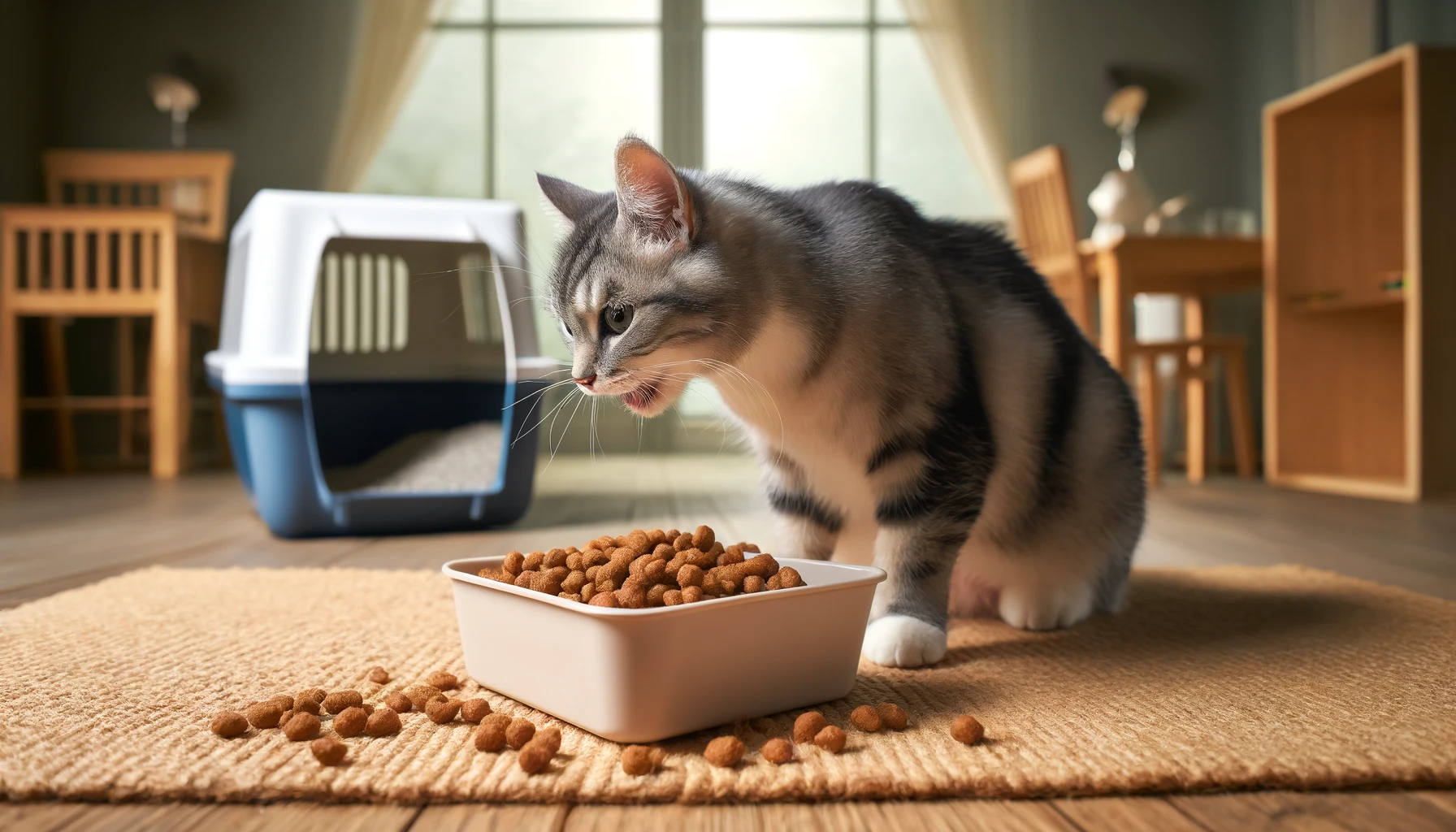
Diet and Its Role in Litter Box Use
Your cat’s diet can have a direct influence on litter box behavior.
If your cat is not receiving proper nutrition or hydration, they may develop constipation or digestive problems, leading to painful elimination.
Additionally, a diet lacking moisture can contribute to urinary problems.
Ensuring your cat has a well-balanced diet, including wet food, helps promote regular and pain-free elimination.
- Feed a complete and balanced diet that includes wet food to keep your cat hydrated and support healthy digestion.
- Monitor your cat’s litter box habits to ensure regular and comfortable elimination.
- If you suspect diet may be a factor in litter box avoidance, consult your veterinarian.

When to Consult a Veterinarian
If litter box aversion is sudden or accompanied by signs of distress, it’s important to seek veterinary advice to rule out any underlying health issues.
Early diagnosis and treatment can prevent more serious problems from developing.
Your veterinarian may perform physical exams, urine tests, or blood work to determine if there is a medical cause for your cat’s behavior.
Chronic conditions such as arthritis or kidney disease can also impede your cat’s ability to comfortably use the litter box.
- Consult a veterinarian if your cat’s litter box habits change suddenly or if they show signs of pain.
- Your vet can run diagnostic tests to identify any medical conditions causing the aversion.
- Early treatment can prevent long-term litter box issues and improve your cat’s quality of life.
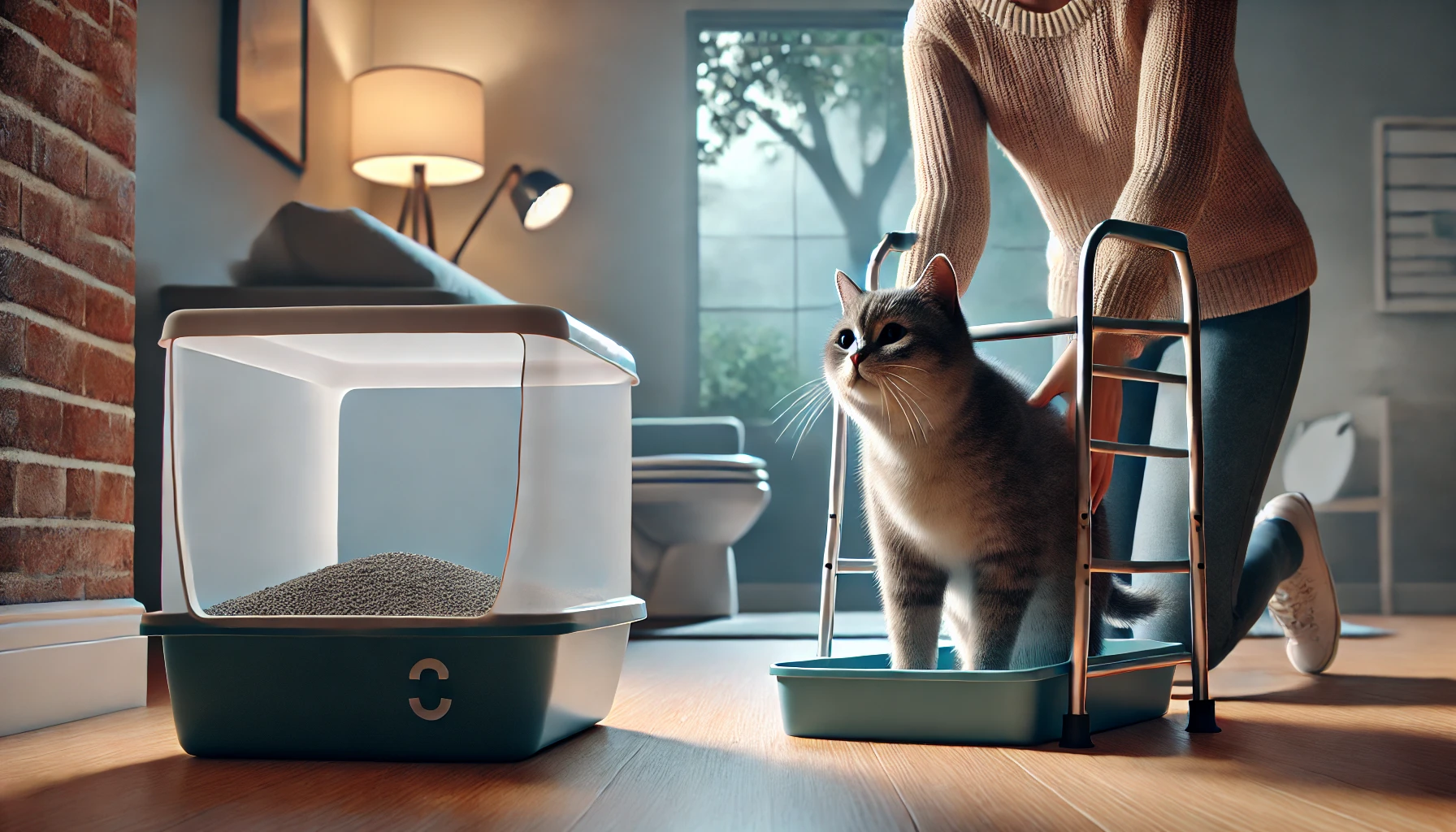
Managing Chronic Conditions Affecting Litter Box Habits
Cats with chronic conditions, such as arthritis or kidney disease, may find it uncomfortable to use a litter box or have trouble navigating in and out of it.
For older cats or those with chronic pain, boxes with lower sides or ramps can make access easier.
Pain management and medications prescribed by your veterinarian can also help alleviate discomfort, making litter box use more manageable for your cat.
- Consider using a litter box with low sides or a ramp for cats with mobility issues.
- Work with your veterinarian to manage chronic conditions and pain appropriately.
- Ensure easy access to the litter box to minimize discomfort for your cat.
Medical issues such as UTIs or kidney disease can cause litter box avoidance. Always consult a vet for proper diagnosis.
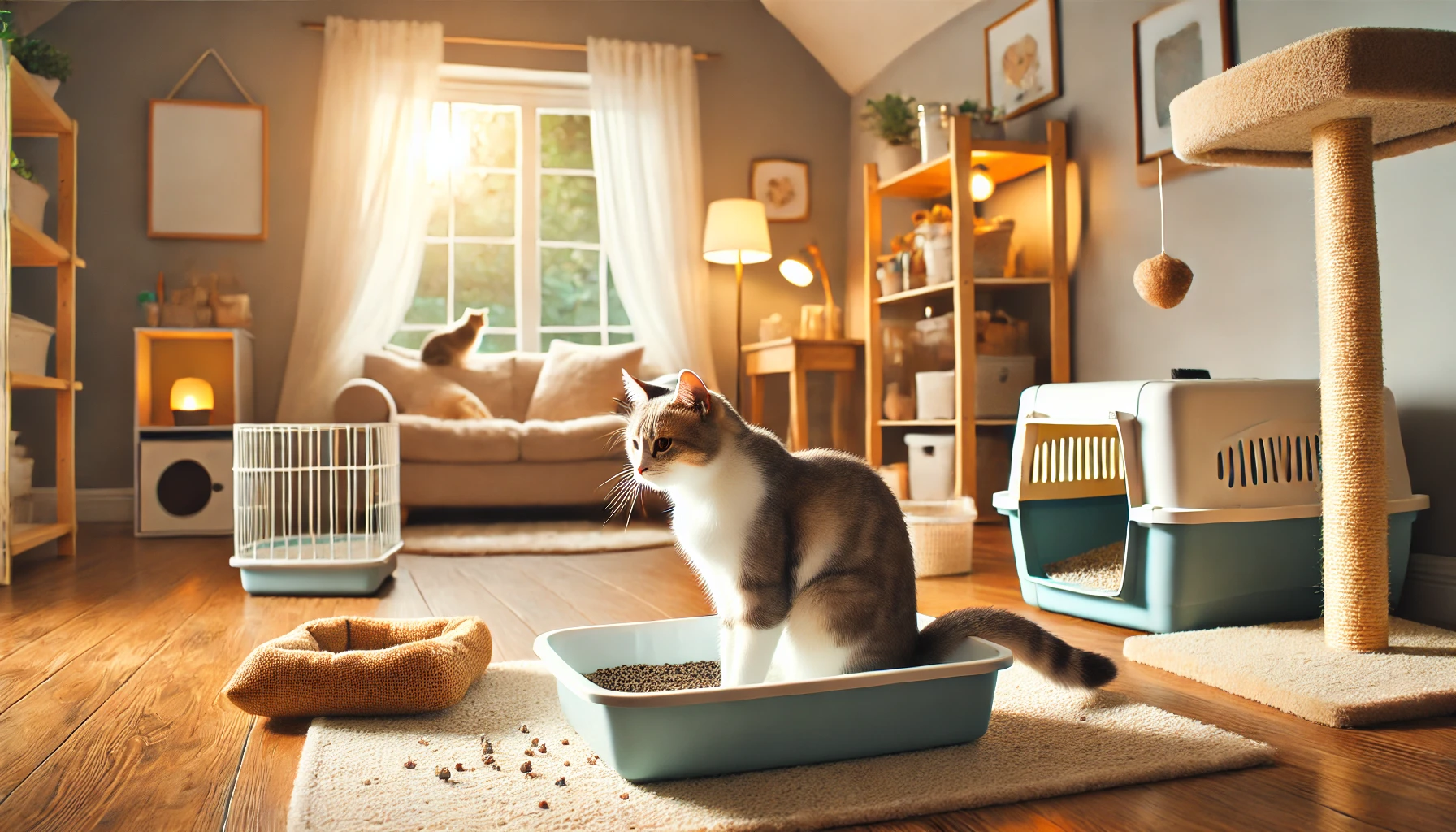
Conclusion: Overcoming Litter Box Aversion in Cats
Litter box aversion can stem from various causes, including environmental changes, behavioral shifts, or underlying medical conditions.
It’s essential to identify why your cat is avoiding the litter box so you can take the right steps to restore normal behavior.
Whether it’s ensuring the litter box is clean and comfortable or consulting a veterinarian for possible health concerns, there are effective ways to make your cat more comfortable using the litter box.

Quick Facts on How to Deal with Litter Box Aversion
You can prevent and recover from litter box aversion by taking the right steps.
Here’s a quick rundown of important points to keep in mind:
- Scoop the litter box daily and deep clean it weekly to prevent litter box aversion.
- Try different litter types or litter boxes to discover what your cat prefers.
- Set up the litter box in a quiet, low-traffic area to reduce stress and make your cat feel more comfortable.
- Monitor your cat for changes in behavior or litter box habits, which could indicate underlying medical issues.
- Praise your cat and reward them for using the litter box correctly. Avoid punishment, as it can increase anxiety.
- If your cat continues to avoid the litter box or shows signs of pain, consult a veterinarian as soon as possible.
It’s important to rule out medical causes when addressing litter box aversion.
A variety of medical conditions, such as urinary tract infections, constipation, or chronic diseases like arthritis or kidney disease, can lead to litter box avoidance.
Early diagnosis and treatment of these conditions can prevent long-term problems.
Regular veterinary check-ups are essential, especially if your cat’s litter box behavior changes suddenly.
Proper nutrition, pain management, and easy access to the litter box can help your cat overcome health-related aversion.
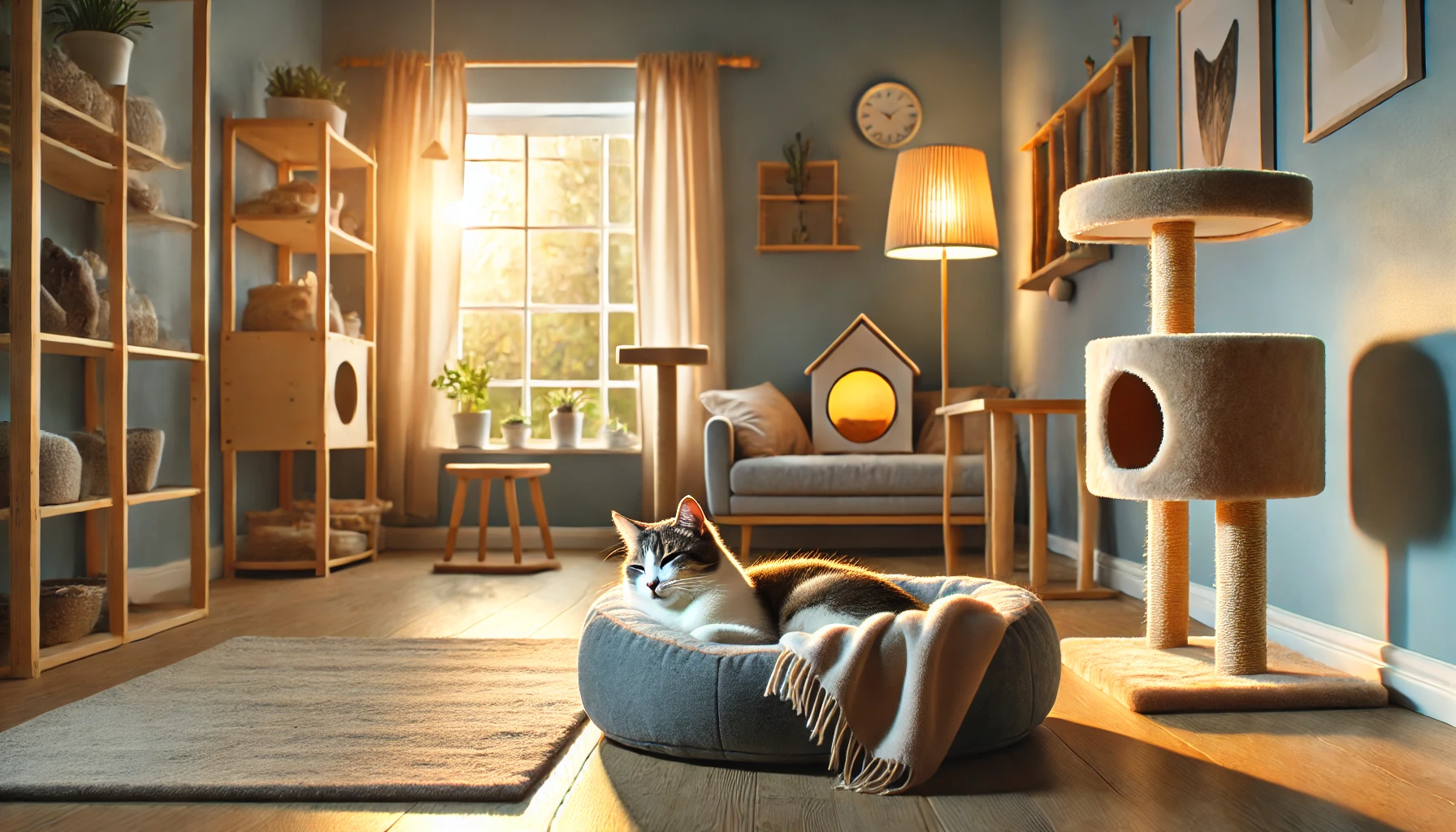
Providing a Safe and Comfortable Environment
Environmental stressors, such as changes in routine, new pets, or noisy environments, can contribute to litter box aversion.
Creating a consistent, quiet, and low-stress environment helps promote confidence and good litter box behavior.
You can also reduce stress and anxiety by providing your cat with hiding spots, vertical spaces, and interactive toys, all of which can encourage regular litter box use.
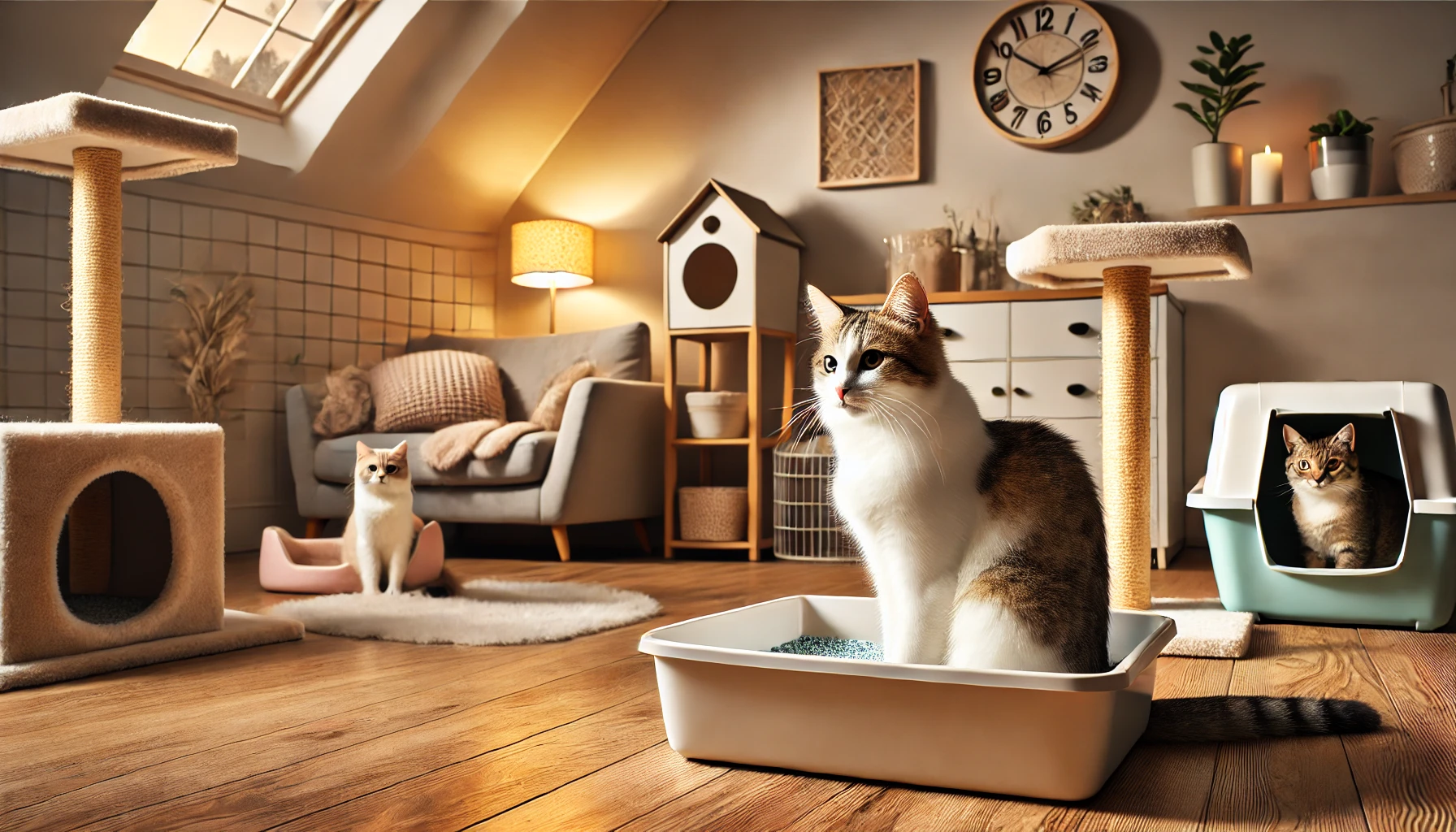
Conclusion to Avoiding and Resolving Litter Box Aversion
In conclusion, resolving litter box aversion requires patience, observation, and a strategic approach to problem-solving.
Identifying the root cause of the problem will guide you to the solutions that can help your cat return to using the litter box regularly.
It’s important to keep the litter box clean, adjust the setup based on your cat’s preferences, and consult a veterinarian when necessary.
With the right care, attention, and effort, your cat can comfortably and confidently return to their litter box habits.
Identify the root cause of your cat’s aversion and use the appropriate behavioral or medical strategies to help your cat return to using the litter box.
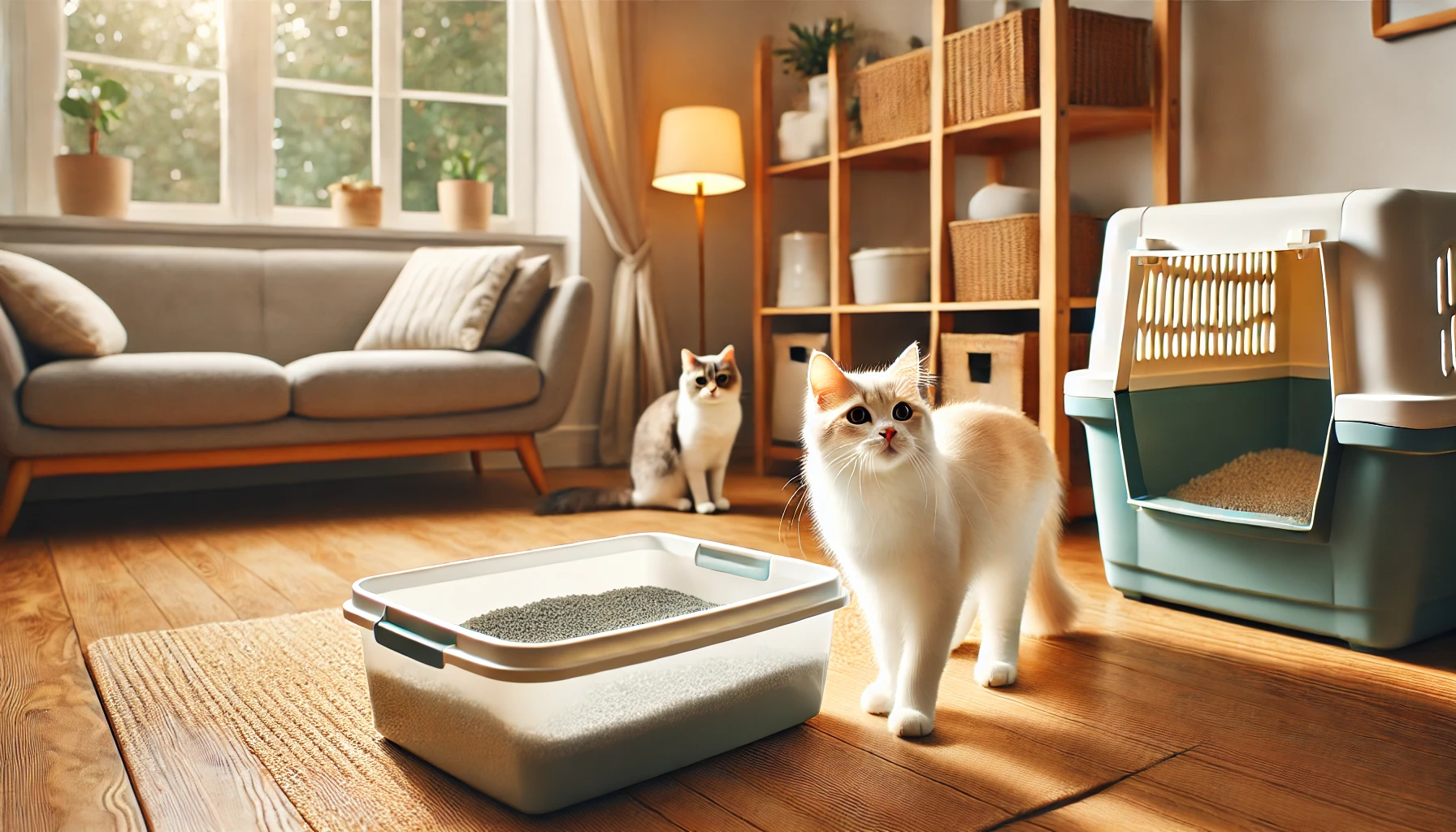
Litter Box Aversion: Frequently Asked Questions
Here are a few common questions regarding litter box aversion and how to overcome the problem, helping you understand and deal with this behavior in cats.
Why is my cat suddenly avoiding the litter box?
Some cats stop using the litter box due to stress, environmental changes, or medical issues like a urinary tract infection.
Resolving this is often simple if the cause is identified and addressed quickly.
How frequently should I clean the litter box?
Scoop the litter box daily and perform a deep clean once a week.
In multi-cat households, clean more frequently to avoid hygiene problems and litter box aversion.
What kind of litter is best for cats that have litter box aversion?
Most cats prefer unscented, clumping litter, but you may need to try different types.
Some cats prefer fine-grain litters, while others might take to natural options like wood or paper pellets.
Does stress influence litter box avoidance among cats?
Yes, stress from environmental changes, new pets, or noisy environments can cause litter box avoidance.
Providing a quiet, peaceful area and maintaining a consistent routine can reduce stress-related aversion.
When should I see a veterinarian regarding litter box issues?
If avoidance is sudden, persistent, or accompanied by signs of pain, consult a veterinarian to rule out any underlying medical conditions.
Does diet play a part in how my cat uses the litter box?
Yes, an improper diet or dehydration can lead to constipation or urinary problems, causing litter box avoidance.
A balanced diet, including wet food, helps maintain hydration and digestive health.
How can I help my older cat with litter box issues?
For cats with limited mobility, use litter boxes with lower sides or ramps.
Pain management prescribed by a veterinarian can also help older cats access the litter box more comfortably.
What can I do if my cat doesn't like the litter box location?
Place the litter box in a quiet, private location with minimal traffic.
If the current location is stressful or noisy, relocate the litter box to a more peaceful area in your home.
How can I reward my cat for going to the litter box?
Praise your cat and reward them with treats, petting, or verbal praise immediately after using the litter box.
Avoid punishment, as it can increase anxiety and worsen the issue.

